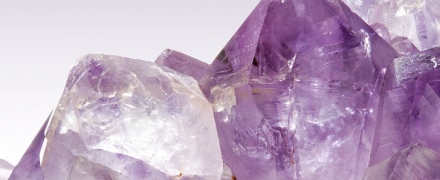open 10 am - 7 pm
laboratory is closed
Purple quartz

As a rule, it is believed that if lilac-violet quartz is installed in the product, then this is necessarily an amethyst. But this statement does not apply to designer jewelry of the late 1980s - 90s. Some of them may contain inserts of lilac quartz from manifestations of the pegmatite field of the Kent massif in Kazakhstan. Geological exploration for quartz and fluorite was carried out on this massif in the 1960s. Later, when it became possible for "home" craftsmen to cut non-precious stones and make products with them, first from cupronickel, tombac and other similar near-jewelry alloys, and then work with gold and silver, they remembered the dumps of the Kent deposit, from which at the end of 1980 in the early 1990s, collection mineralogical material and cutting raw materials of lilac quartz were actively exported. Quartz from the Kent deposit, although it resembles amethyst in color, is still different from it. The color of lilac quartz has a slightly different nature than that of amethyst, in which the color is caused by an admixture of iron ions exposed to radiation. In lilac quartz, iron is either absent, or its content is so negligible that they can be ignored, and the color is determined by structural color-forming defects in the crystal lattice without the participation of iron ions. Therefore, when identifying lilac quartz in old inexpensive "author's" products, before making a conclusion about the term "amethyst", the insert should be subjected to comprehensive gemological research, while the insert in the setting does not always allow for the necessary expert procedures.
В геммологической практике бывают весьма увлекательные случаи с диагностикой ювелирных вставок
Но помимо редкости цвета и высокой стоимости таких камней, многие розовые камни выделяются одной замечательной особенностью – они проявляют плеохроизм, то есть в зависимости от положения осмотра камня он может иметь дополнительные оттенки – оранжевый или пурпурный.
Currently, gemstones are produced by two fundamentally different technological methods - the High Pressure - High Temperature method (“HPHT”, High-pressure & High-temperature) and the Chemical Vapor Deposition (“CVD”, Chemical vapor deposition) method. The "HPHT" method is the most tested classical synthesis method, which can be used both carbon deposition on diamond from flux melts and catalytic reactions. In "CVD" synthesis, diamond growth occurs on a seed during carbon deposition mainly from a gaseous medium at relatively low temperatures and pressures.
Jewelry and precious stones are just such a category of goods, when buying which you need to pay attention to many criteria.
Sogdianite is a rather rare mineral and more often it can be found as a collection material (moreover, in systematic collections), and it is extremely rare in jewelry.






